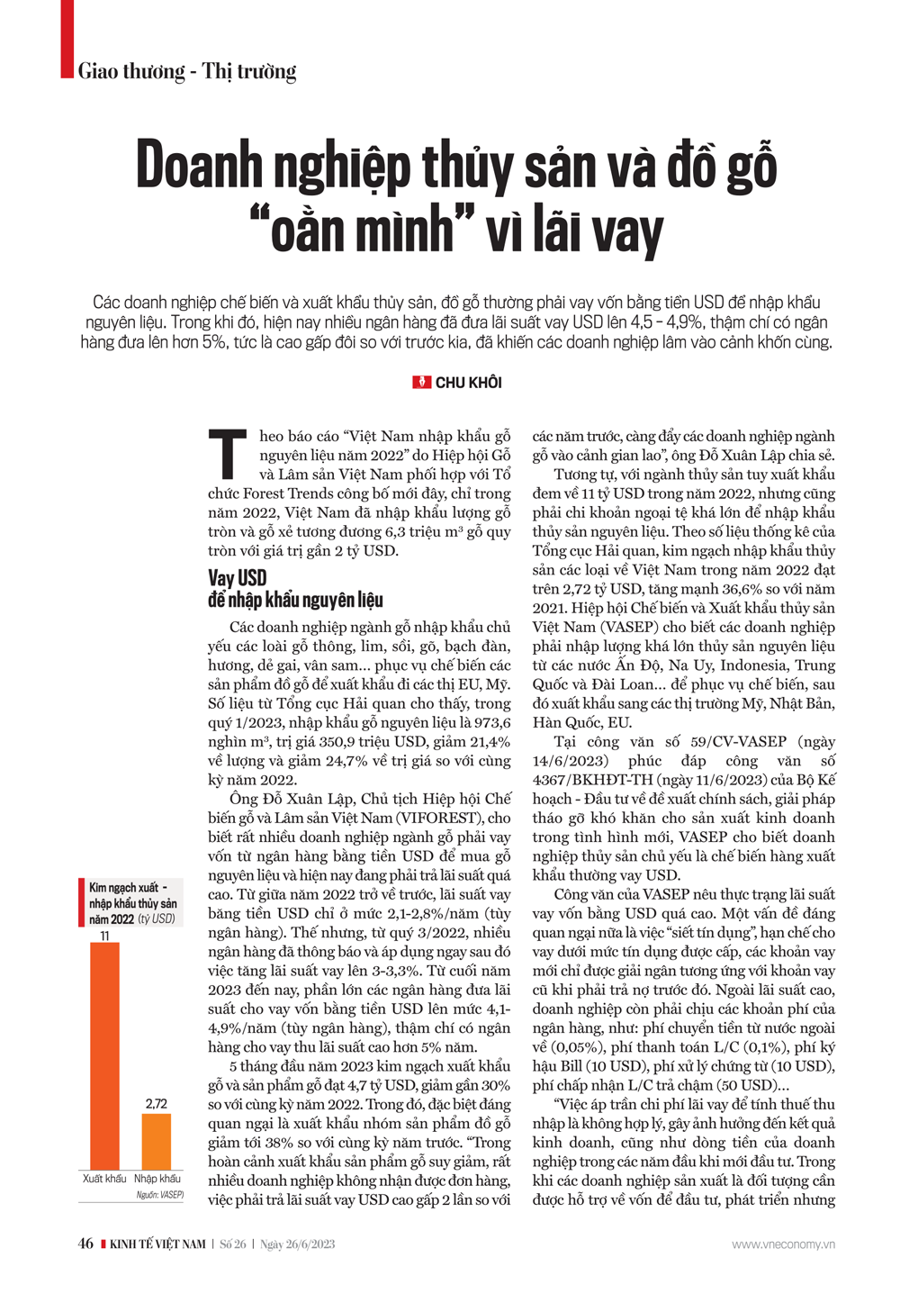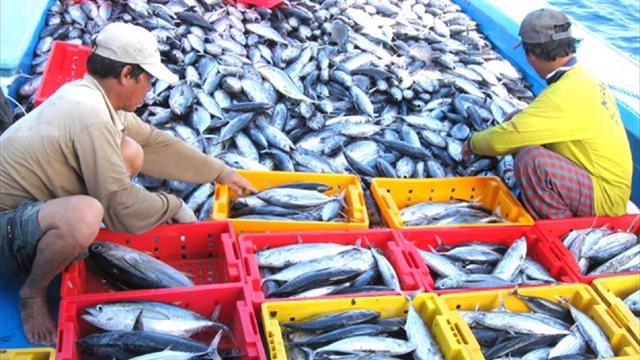[ad_1]
According to the “Vietnam Imports Raw Timber in 2022” report recently released by the Vietnam Timber and Forest Product Association in cooperation with Forest Trends, in 2022 alone, Vietnam imported logs and sawn timber containing 6.3 million m3 of logs with a Value equates to nearly $2 billion.
LOANS USD TO IMPORT MATERIALS
Timber industry companies mainly import species of pine, ironwood, oak, oak, eucalyptus, frankincense, beech, spruce, etc. for processing of timber products for export to EU and US markets. Data from the General Ministry of Customs shows that in the first quarter of 2023, the import of raw wood was 973.6 thousand m3, worth $350.9 million, down 21.4% in volume and 24.7% in volume compared to the same period corresponds to 2022.
Mr Thu
From mid-2022, the USD lending rate will only be 2.1-2.8%/year (depending on the bank). However, many banks have announced from the third quarter of 2022 and immediately thereafter requested an increase in the lending rate to 3-3.3%. From the end of 2023 to now, most banks have raised the interest rate on loans in USD to 4.1-4.9%/year (depending on the bank), some banks even have high interest rates. more than 5% per year.
In the first five months of 2023, the export turnover of timber and timber products reached US$4.7 billion, down almost 30% compared to the same period in 2022. Of particular concern is the decline in exports of wood products by up to 38% compared to the same period last year.
“Faced with the decline in exports of timber products, many enterprises failed to receive orders and paid USD lending rates twice as high as in previous years, further putting timber enterprises in a difficult situation,” said Mr. Do Xuan with Schoss.
The seafood industry is similar: although exports will bring in $11 billion in 2022, it also has to spend large amounts of foreign exchange to import raw seafood. According to statistics from the General Department of Customs, the import turnover of seafood to Vietnam reached over US$2.72 billion in 2022, a sharp increase of 36.6% compared to 2021.
“It is unreasonable to place a cap on interest expense for income tax calculations that impacts business results as well as a company’s cash flow in the early years of investment. While companies are in production. that require capital support for investment and development, but are subject to this cap.
According to the official letter from VASEP
The Vietnamese Association of Seafood Exporters and Producers (VASEP) said companies need to import large quantities of raw seafood from India, Norway, Indonesia, China and Taiwan for further processing. Then they export them to USA, Japan, Korea, EU markets.
In Official Letter No. 59/CV-VASEP (June 14, 2023) in response to Ministry of Planning and Investment Official Letter No. 4367/BKHDT-TH (June 11, 2023) on policy proposals and solutions. In order to eliminate difficulties in production and business in the new situation, VASEP said that seafood companies, which mainly process export products, often take out loans in USD.
The official letter from VASEP stated that the loan interest rate in USD was too high. Another problem is the “credit crunch” where lending is limited below the approved credit limit and new loans are disbursed in proportion to the old loan only when the previous debt has to be repaid. In addition to the high interest rates, companies also have to bear banking fees such as: foreign wire transfer fee (0.05%), letter of credit payment fee (0.1%), invoice confirmation fee ($10), document processing fee ($10), L/C Late Payment Acceptance Fee ($50)…
FOR COMPANIES, LIGHT LIGHT NEED TO GO LIGHT WEIGHT
According to VASEP data, seafood exports only reached nearly US$3.37 billion in the first five months of 2023, down almost 28% year-on-year; The volume of export orders also fell by 20-50%.
“While the consumer market is collapsing, export prices are falling and input costs are rising, bank interest rates continue to pose an additional burden for fish trading companies.” throttle, reduce working hours and lay off workers,” emphasized VASEP.
Therefore, VASEP recommends that the government, Treasury and State Bank consider adjusting the USD lending rate below 4% and the VND lending rate below 7% to support export companies. It is recommended that seafood companies be granted a credit extension of 4 to 6 months for loans due in Q2 and Q3 of 2023, and continue to borrow for 6 months as part of the export cap Beginning of the year to allow companies to stably collect raw materials from farmers and fishermen, and to process and store goods in preparation for export in the next few quarters in 2023.
The content of the article was published in Vietnam Economic Review No. 26-2023 on June 26, 2023. Welcome readers to read below The:
https://postenp.phaha.vn/chi-tiet-toa-soan/tap-chi-king-te-viet-nam

[ad_2]
Source link

